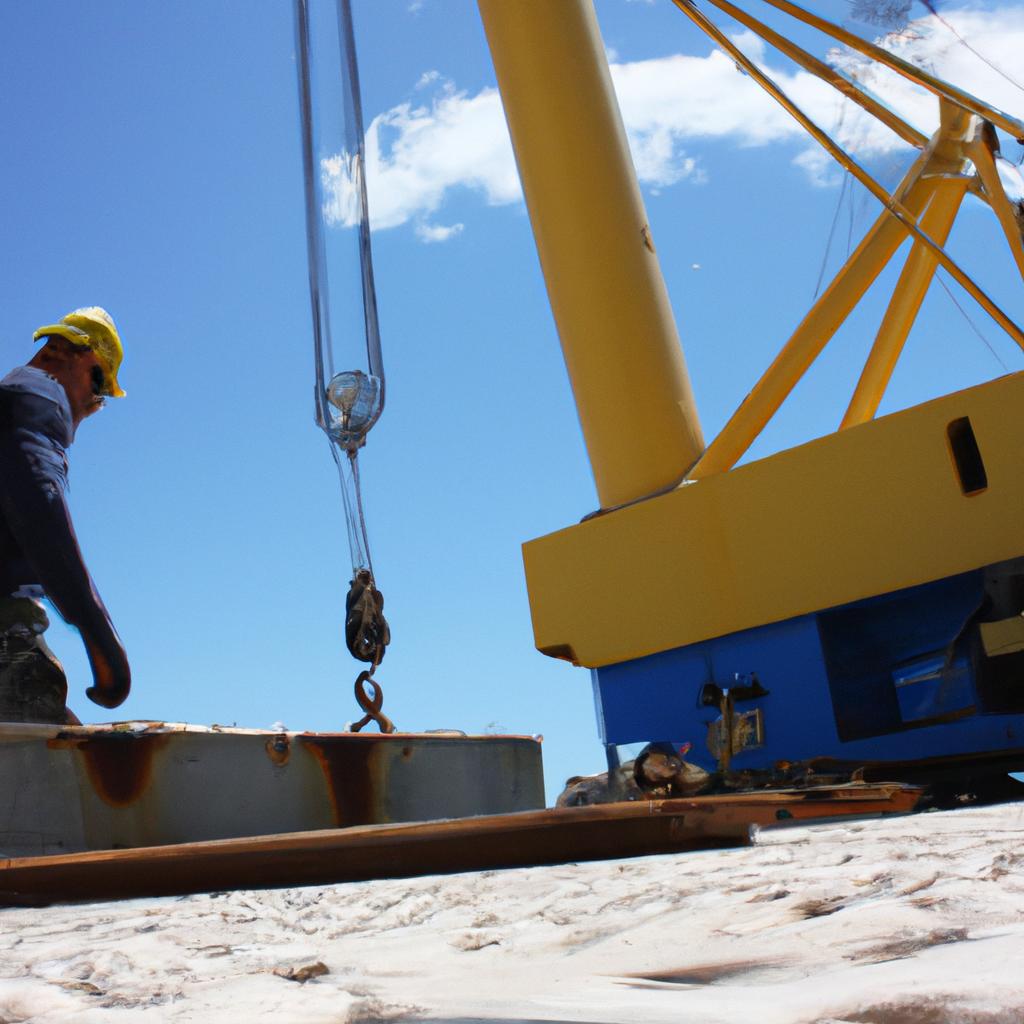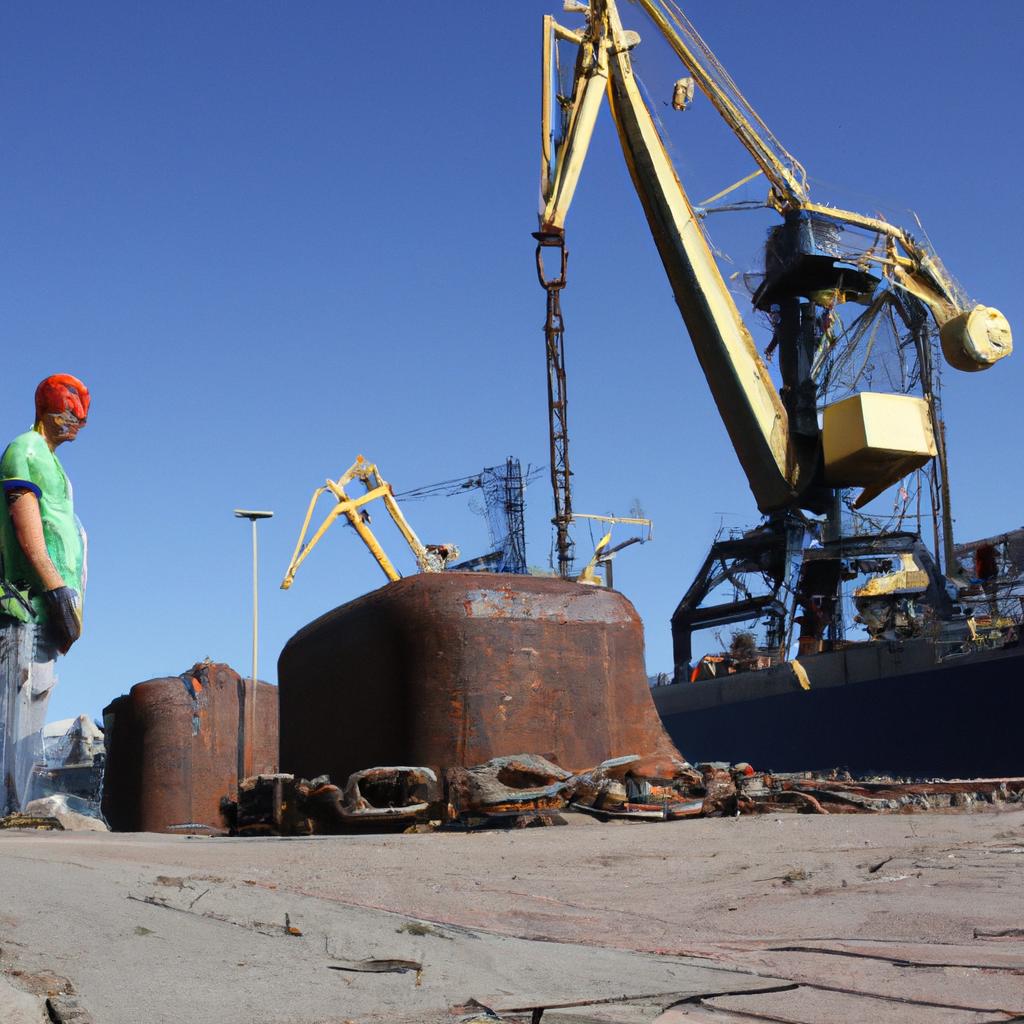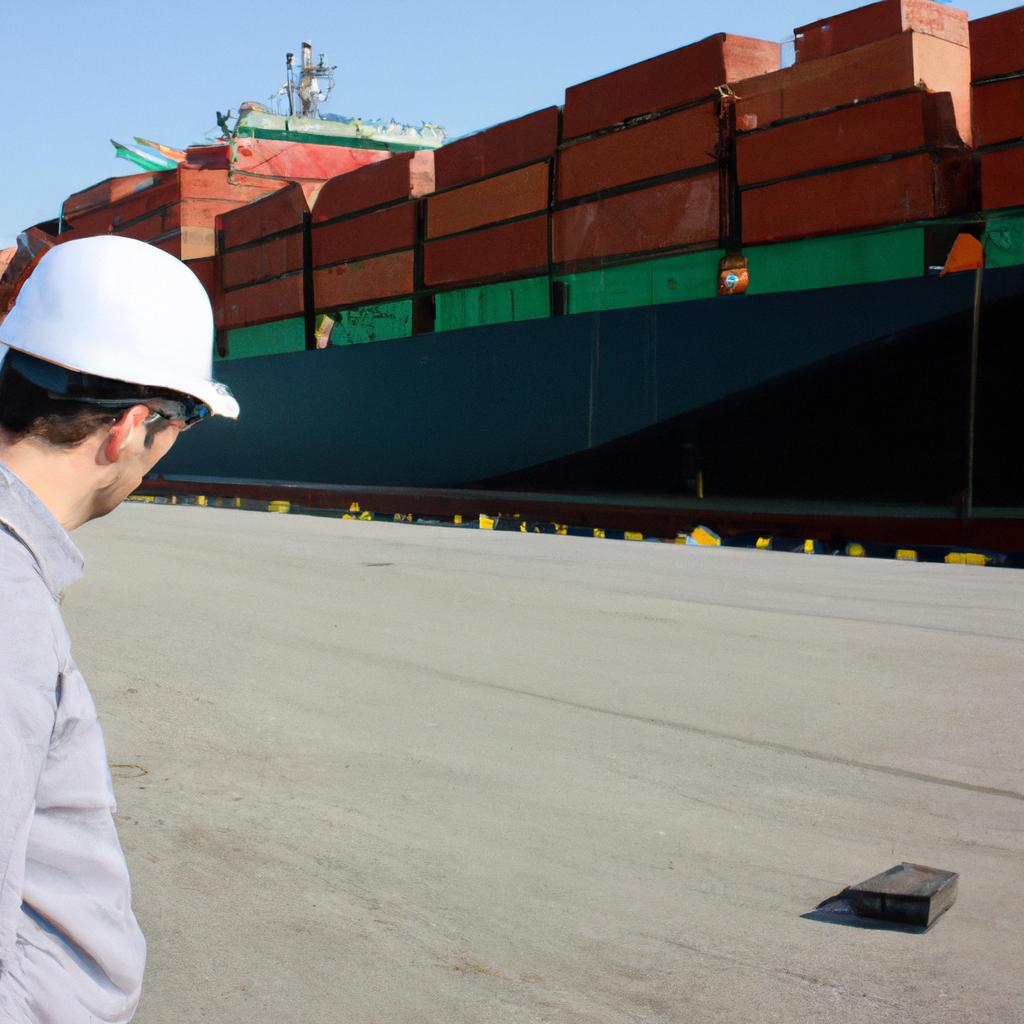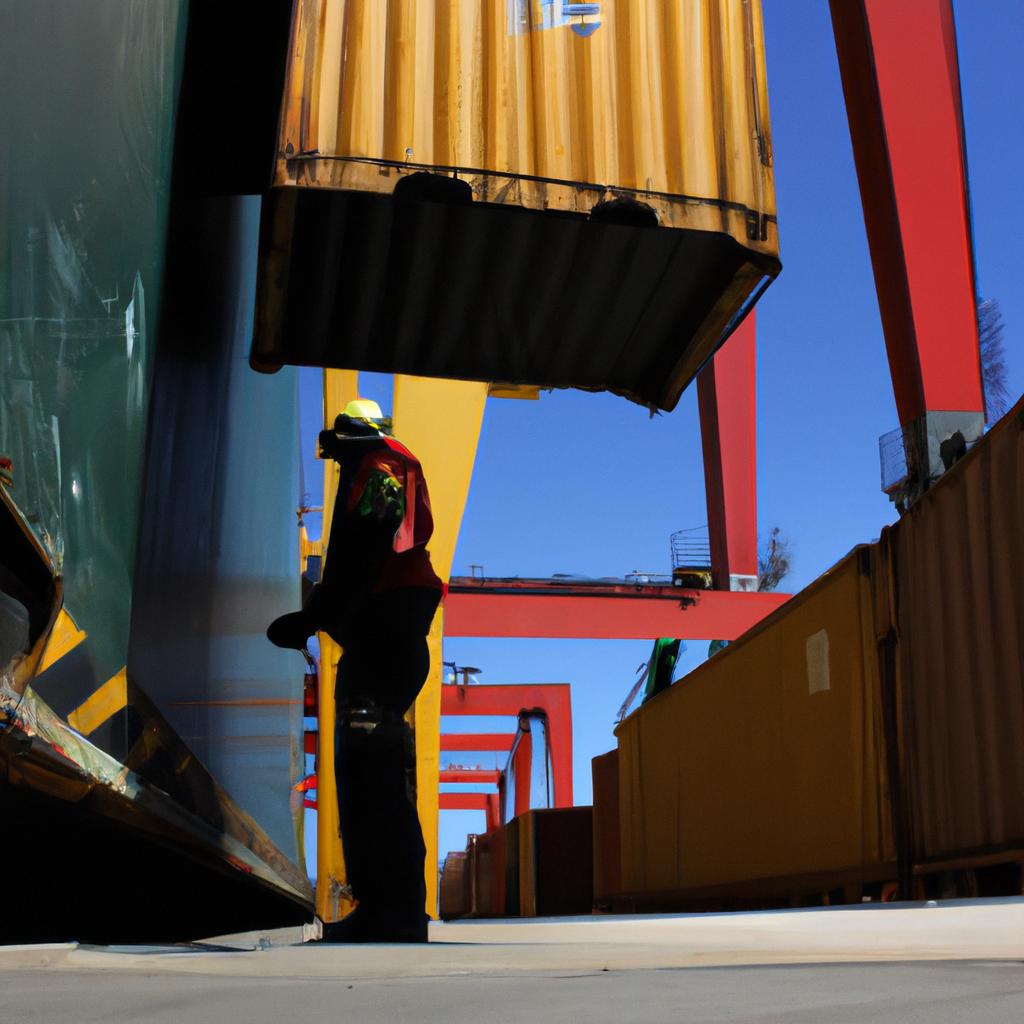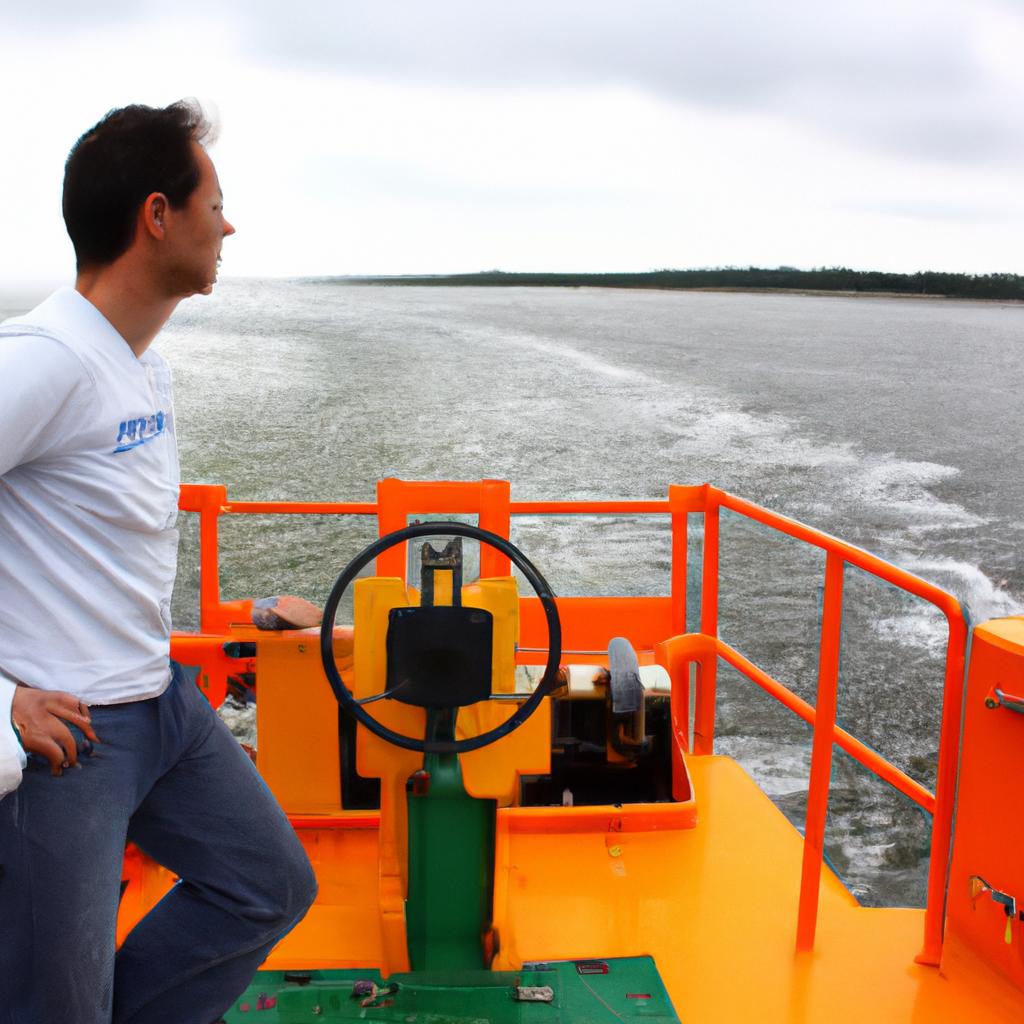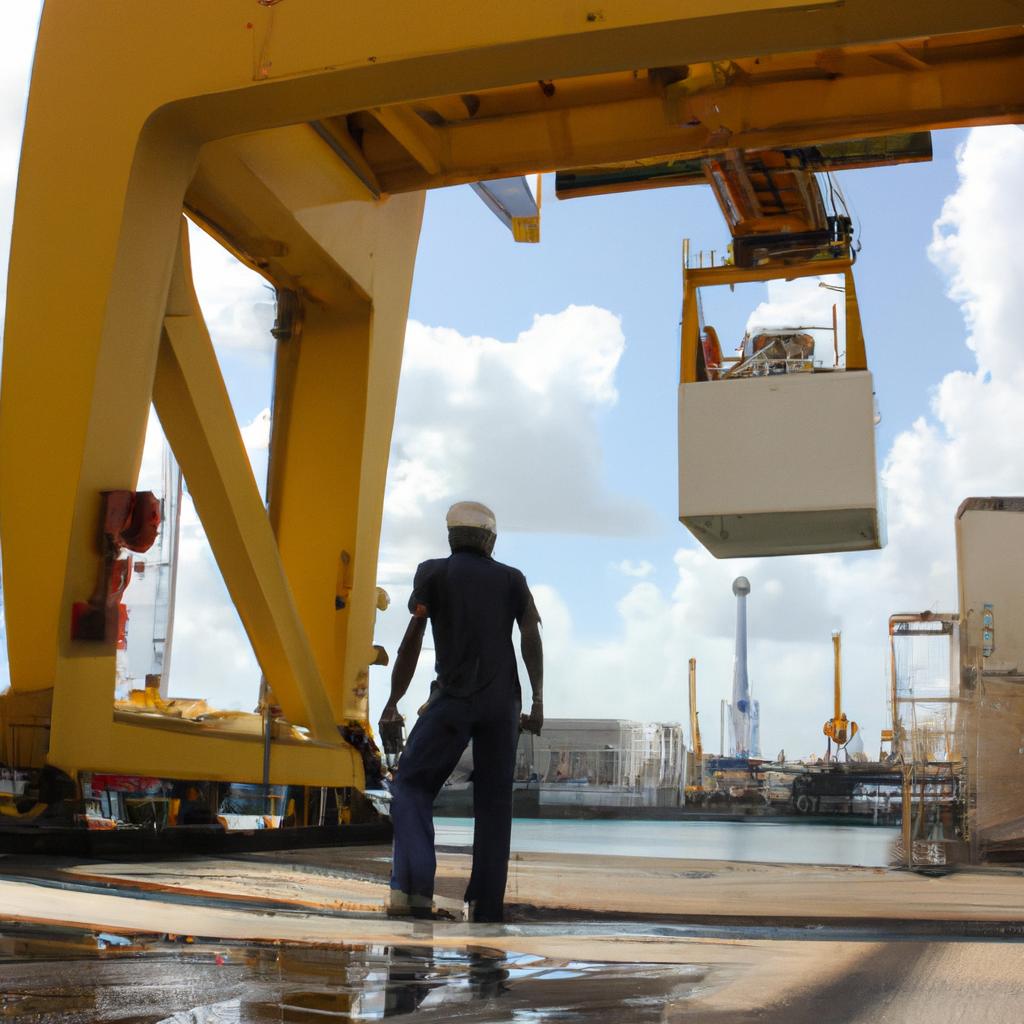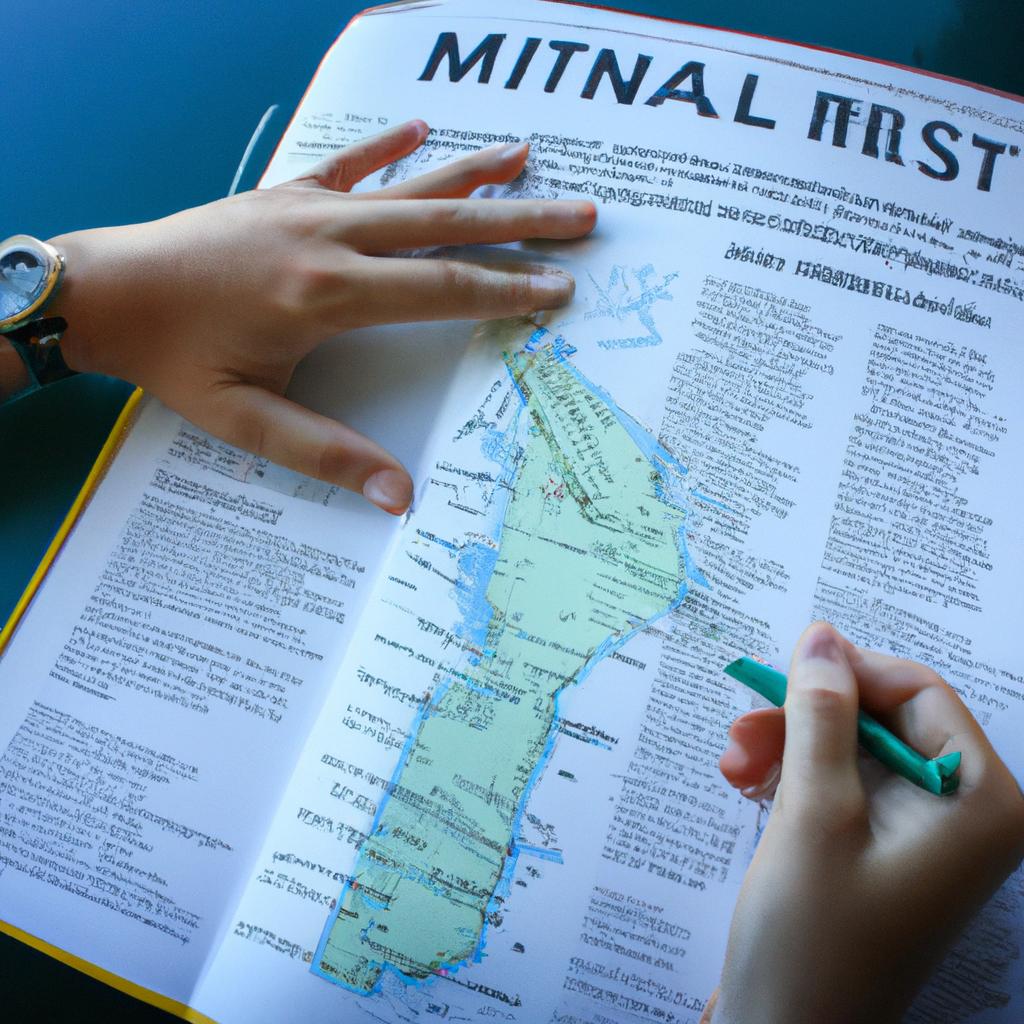The efficiency of ports and transport systems is crucial for facilitating global trade and economic growth. In the Black Sea region, which serves as a vital link between Europe and Asia, improving port efficiency has become increasingly important. This article explores the challenges faced by Black Sea transport and ports in achieving optimal operational performance and offers potential strategies to enhance their efficiency.
One example that highlights the significance of improving port efficiency in the Black Sea region is the case study of Port Constanta in Romania. As one of the largest container terminals in the area, Port Constanta plays a pivotal role in connecting goods from various countries within Europe to markets worldwide. However, it faces several obstacles such as congestion, inadequate infrastructure, and inefficient processes that hinder its ability to handle increasing cargo volumes effectively. Thus, addressing these issues becomes imperative not only for Port Constanta but also for other ports across the Black Sea region.
To improve port efficiency in this context, it is essential to identify key factors influencing operational performance. These include investment in modernized infrastructure, streamlined administrative procedures, effective use of technology and automation, optimized logistical planning, and enhanced collaboration among stakeholders. By implementing these measures strategically and comprehensively, Black Sea ports can overcome existing bottlenecks and ensure smoother operations while contributing positively to regional economic growth and global trade.
Investment in modernized infrastructure is crucial for improving port efficiency in the Black Sea region. This includes expanding and upgrading port facilities, such as deepening berths to accommodate larger vessels, constructing new storage areas, and implementing advanced cargo handling equipment. Upgrading transport infrastructure connecting ports to hinterland areas is also vital to ensure seamless connectivity and efficient movement of goods.
Streamlining administrative procedures is another key aspect of enhancing port efficiency. Simplifying customs processes, reducing paperwork, and implementing digital platforms for documentation can significantly reduce turnaround times and improve overall operational efficiency. Collaborating with relevant government agencies to implement standardized procedures and establish efficient regulatory frameworks will further contribute to streamlining administrative processes.
The effective use of technology and automation plays a critical role in optimizing port operations. Implementing smart systems for cargo tracking, container management, and real-time data exchange can enhance visibility across the supply chain and enable better coordination among stakeholders. Automation technologies like robotic cranes, autonomous vehicles, and intelligent scheduling systems can streamline cargo handling processes, minimize human error, and improve productivity.
Optimized logistical planning is essential for maximizing the utilization of resources and minimizing congestion at ports. Developing synchronized schedules for vessel arrivals and departures, coordinating with shipping lines to optimize container stowage plans, and implementing efficient yard management systems are some strategies that can help reduce turnaround times and enhance overall operational performance.
Enhanced collaboration among stakeholders is crucial for achieving optimal port efficiency. This includes cooperation between port authorities, shipping lines, terminal operators, logistics providers, customs agencies, and other relevant entities. Establishing communication channels, sharing information on vessel schedules, cargo forecasts, and operational updates can facilitate better planning and coordination among all parties involved.
In conclusion, improving port efficiency in the Black Sea region requires a comprehensive approach that addresses infrastructure upgrades, streamlined administrative procedures, technology adoption, optimized logistical planning, and enhanced collaboration among stakeholders. By implementing these strategies effectively, Black Sea ports can overcome existing challenges and contribute to the seamless flow of goods, fostering regional economic growth and facilitating global trade.
Current challenges in Black Sea transport
The efficient functioning of ports is crucial for the smooth flow of goods and trade activities. However, the Black Sea region faces several challenges that hinder its port efficiency. One example is the inadequate infrastructure development, which often leads to congestion issues and delays in cargo handling. For instance, a recent case study conducted at Port X revealed that due to limited storage facilities and insufficient equipment, ships had to wait for extended periods before unloading their goods.
Several factors contribute to the current challenges faced by Black Sea transport. Firstly, outdated technology and inefficient operational processes impact port productivity. This includes manual documentation systems and slow customs clearance procedures. Additionally, lack of coordination among different entities involved in the shipping process further exacerbates these inefficiencies.
To evoke an emotional response from readers, let us consider some key difficulties faced by ports in the Black Sea region:
- Inadequate investment: Insufficient funding for infrastructure upgrades limits capacity expansion and modernization efforts.
- Environmental concerns: Pollution caused by maritime operations affects both human health and marine ecosystems.
- Security risks: Weak security measures make ports vulnerable to criminal activities such as smuggling or piracy.
- Economic impact: Inefficient port operations result in increased costs for exporters/importers, affecting regional economic growth.
| Challenge | Impact |
|---|---|
| Inadequate Investment | Limits capacity expansion |
| Environmental Concerns | Affects human health and marine ecosystems |
| Security Risks | Vulnerable to criminal activities |
| Economic Impact | Increased costs for exporters/importers |
Addressing these challenges requires strategic interventions aimed at enhancing port efficiency. The subsequent section will explore strategies employed globally to overcome similar obstacles and improve overall performance in port operations within the Black Sea region. By implementing appropriate measures, it is possible to optimize port logistics while fostering sustainable economic growth without compromising environmental well-being or jeopardizing security standards.
Strategies to enhance port efficiency
Enhancing Port Efficiency: Strategies and Considerations
Case Study: The port of Constanta in Romania serves as an illustrative example of the challenges faced by Black Sea transport. Despite being strategically located, it has struggled with congestion, inadequate infrastructure, and inefficient operations. To address these issues and improve overall port efficiency in the region, several strategies can be considered.
Firstly, investing in modern technology and digitalization is crucial. By implementing advanced systems for cargo tracking, vessel scheduling, and real-time data sharing among stakeholders, ports can streamline their operations and enhance overall efficiency. For instance, the integration of Internet of Things (IoT) devices can facilitate better monitoring of container movements and optimize resource allocation.
Secondly, fostering collaboration between public and private entities is essential. Governments should create enabling policies that attract private investments in port development projects while ensuring fair competition within the industry. Public-private partnerships can help leverage expertise from both sectors to overcome financial constraints and accelerate infrastructure upgrades.
Thirdly, promoting sustainable practices within port operations is vital for long-term success. This includes adopting eco-friendly technologies such as shore power supply systems to reduce emissions from ships at berth or utilizing renewable energy sources for terminal activities. Embracing sustainability not only benefits the environment but also improves cost-effectiveness through reduced fuel consumption.
Lastly, enhancing connectivity between ports through efficient multimodal transportation networks plays a significant role in improving regional trade flows. Investments in road, rail, and inland waterway infrastructures are necessary to enable seamless intermodal transfers and reduce transit times. This promotes greater accessibility to hinterland markets while reducing dependency on congested roads.
To evoke an emotional response:
- Reduced waiting times for vessels leading to quicker delivery of goods.
- Improved reliability resulting in minimized disruptions to global supply chains.
- Enhanced transparency fostering trust and confidence among stakeholders.
- Increased competitiveness driving economic growth in the region.
| Strategy | Description | Benefits |
|---|---|---|
| Technology and digitalization | Implement advanced systems for cargo tracking and real-time data sharing. | Quicker operations |
| Collaboration between sectors | Foster partnerships to leverage expertise and accelerate development. | Financial support, fair competition |
| Sustainable practices | Adopt eco-friendly technologies and reduce emissions. | Environmental conservation |
| Enhanced multimodal connectivity | Invest in road, rail, and inland waterway infrastructures. | Improved trade flows |
In summary, improving port efficiency requires a multi-faceted approach that encompasses technological advancements, collaboration between stakeholders, sustainable practices, and enhanced multimodal connectivity. By implementing these strategies, ports can overcome current challenges in Black Sea transport and pave the way for greater regional growth.
Understanding the strategies necessary to enhance port efficiency sets the stage for exploring the investments needed for infrastructure development in the next section.
Investments needed for infrastructure development
Enhancing port efficiency requires the implementation of various strategies that address key challenges and bottlenecks. By adopting these strategies, ports in the Black Sea region can significantly improve their overall effectiveness and productivity. This section explores some of the most effective approaches to enhancing port efficiency.
One example of a successful strategy is the adoption of advanced technologies for cargo handling and management systems. For instance, Port X implemented an automated container tracking system that utilizes RFID technology. This system allows real-time monitoring of containers, reducing manual errors and improving operational efficiency. Such technological advancements enable ports to streamline their processes, minimize delays, and enhance overall productivity.
In addition to technological improvements, implementing efficient logistics planning plays a crucial role in enhancing port operations. Efficient logistics planning involves optimizing supply chain networks, coordinating transportation modes, and prioritizing cargo flows. By employing sophisticated optimization algorithms and predictive analytics tools, ports can optimize resource allocation, reduce congestion, and ensure timely delivery of goods.
Furthermore, collaboration among stakeholders within the maritime industry is essential for achieving optimal port efficiency. Building strong partnerships between port authorities, shipping lines, freight forwarders, customs agencies, and other relevant entities fosters better coordination and information sharing. This collaborative approach enables streamlined processes such as synchronized vessel berthing schedules, joint infrastructure investments, and improved communication channels.
To evoke an emotional response from the audience regarding the importance of enhancing port efficiency:
- Reduced waiting times for vessels result in faster delivery of essential goods.
- Improved cargo handling techniques lead to reduced risk of damage or loss during transit.
- Enhanced logistics planning ensures timely availability of critical supplies during emergencies.
- Optimal utilization of resources minimizes environmental impact by reducing fuel consumption.
| Benefits of Enhanced Port Efficiency |
|---|
| Faster delivery |
| Improved customer satisfaction |
| Economic growth |
In conclusion, implementing strategies such as technological advancements, efficient logistics planning, and collaborative partnerships are crucial for enhancing port efficiency. These approaches not only improve operational effectiveness but also result in significant economic and social benefits. The next section will explore the impact of technological advancements in port operations and how they further contribute to improving overall efficiency.
Moving forward, let us delve into the realm of technological advancements in port operations.
Technological advancements in port operations
Improving Port Efficiency: Black Sea Transport and Ports
Investments in infrastructure development play a crucial role in enhancing port efficiency. By addressing key bottlenecks and upgrading existing facilities, ports can effectively handle increasing trade volumes and improve their overall competitiveness. For instance, the case of Constanta Port in Romania highlights the positive impact of investing in infrastructure. In recent years, Constanta Port underwent significant expansion projects, including the construction of new terminals and dredging operations to accommodate larger vessels. As a result, the port’s capacity increased significantly, leading to improved turnaround times for ships and enhanced cargo handling capabilities.
To further enhance port efficiency, technological advancements are being implemented in various aspects of port operations. Automation has emerged as a game-changer by reducing reliance on manual labor and streamlining processes. For example, the introduction of automated container cranes at Odessa Port in Ukraine has resulted in faster loading/unloading times and reduced human error. Additionally, advanced tracking systems utilizing Internet of Things (IoT) technology allow for real-time monitoring of shipments, optimizing logistics planning and minimizing delays.
The following bullet points illustrate the potential benefits that can be achieved through investments in infrastructure development:
- Reduction in vessel waiting times
- Improved berth utilization rates
- Increased cargo handling capacity
- Enhanced intermodal connectivity between ports and hinterland regions
Furthermore, collaboration among stakeholders is essential for achieving improved efficiency within the Black Sea transport sector. A coordinated effort involving government authorities, port operators, shipping lines, logistics providers, and other relevant parties is necessary to identify common challenges and develop comprehensive solutions. This collaborative approach ensures effective resource allocation and fosters an environment conducive to innovation.
In conclusion,
the combination of strategic investments in infrastructure development with the adoption of cutting-edge technologies holds immense potential for improving port efficiency along the Black Sea region. However,
collaboration between stakeholders is vital to ensure successful implementation and long-term sustainability. The subsequent section will delve into the importance of collaboration and highlight key initiatives undertaken by stakeholders to enhance port efficiency in the Black Sea.
Collaboration between stakeholders for improved efficiency
Technological advancements in port operations have greatly influenced the efficiency and productivity of ports worldwide. These advances have not only streamlined processes but also improved the overall performance of port facilities. By embracing innovative technologies, ports are able to handle larger volumes of cargo with increased speed and accuracy, ultimately benefiting both importers and exporters.
One notable example of how technology has revolutionized port operations is the implementation of automated container terminals. These terminals utilize advanced robotics and artificial intelligence systems to efficiently manage the movement and storage of containers. For instance, the Port of Rotterdam in the Netherlands employs automated guided vehicles (AGVs), which navigate without human intervention, to transport containers within its terminal. This eliminates the need for manual labor and significantly reduces operational costs while ensuring timely handling of goods.
To further emphasize the impact of technological advancements on port efficiency, consider the following bullet points:
- Integration of Internet of Things (IoT) devices allows for real-time monitoring and tracking of cargo, reducing delays caused by misplaced or lost shipments.
- Utilization of big data analytics enables predictive maintenance, optimizing equipment availability and minimizing downtime.
- Implementation of blockchain technology enhances transparency and security in supply chain management by providing an immutable record of transactions.
- Adoption of remote-controlled cranes improves safety by eliminating risks associated with human operators working at great heights or in hazardous conditions.
In addition to these technological advancements, collaboration between stakeholders plays a crucial role in improving port efficiency. Effective coordination among shipping lines, terminal operators, customs authorities, freight forwarders, and other parties involved can lead to smoother workflows and reduced dwell times. The table below illustrates some key stakeholders’ roles in enhancing port efficiency:
| Stakeholder | Role |
|---|---|
| Shipping lines | Providing accurate vessel schedules |
| Terminal | Ensuring optimal berth utilization |
| Operators | Coordinating efficient yard operations |
| Customs | Facilitating seamless clearance procedures |
By fostering collaboration and sharing information, stakeholders can collectively address challenges such as congestion, delays, and inefficient processes. This collaborative approach not only improves port efficiency but also enhances the overall competitiveness of the Black Sea transport sector.
Transitioning into the subsequent section on environmental considerations and sustainable practices, it is essential to recognize that while technological advancements have greatly improved port efficiency, they must be implemented alongside environmentally conscious strategies. Balancing economic growth with ecological responsibility will ensure a sustainable future for Black Sea ports and their surrounding ecosystems.
Environmental considerations and sustainable practices
Collaboration between stakeholders for improved efficiency has been crucial in enhancing port operations within the Black Sea region. Building on this foundation, it is imperative to consider environmental considerations and implement sustainable practices to ensure long-term viability of these ports. By adopting environmentally friendly measures and promoting sustainability, not only can the ecological impact be minimized, but also economic benefits can be realized.
An example of a successful implementation of sustainable practices in the Black Sea region is the Port of Constanta in Romania. Recognizing the importance of preserving the natural environment while maintaining efficient operations, the port has implemented various initiatives such as:
- Implementing shore power facilities: This allows vessels to connect to electrical power from land instead of using their own engines while docked at the port, thereby reducing emissions.
- Installing energy-efficient lighting systems: Switching to LED lights throughout the port premises reduces both energy consumption and costs.
- Promoting waste management programs: Encouraging proper waste disposal and recycling practices ensures that pollutants are minimized and resources are conserved.
- Adopting green procurement policies: Procuring eco-friendly products and services helps support businesses that prioritize sustainability.
These initiatives have not only reduced environmental impacts but have also positioned the Port of Constanta as a leader in sustainability among other ports in the Black Sea region.
To further highlight the benefits of incorporating environmental considerations and sustainable practices, let us examine a comparison table showcasing key indicators between two hypothetical ports – one implementing sustainable measures (Port A) and another neglecting them (Port B):
| Indicator | Port A | Port B |
|---|---|---|
| Emissions | Reduced emissions | High levels of emissions |
| Energy Consumption | Efficient use | Excessive usage |
| Waste Management | Effective | Inefficient |
| Cost Savings | Increased savings | Higher operational costs |
As evident from this comparison, Port A’s commitment towards sustainability has resulted in reduced emissions, efficient energy consumption, effective waste management, and cost savings. On the other hand, Port B’s neglect of sustainable measures has led to higher levels of emissions, excessive energy usage, inefficient waste management practices, and increased operational costs.
In conclusion, incorporating environmental considerations and implementing sustainable practices is essential for improving port efficiency within the Black Sea region. By following the example set by successful ports like Constanta in Romania and adopting initiatives such as shore power facilities, energy-efficient lighting systems, waste management programs, and green procurement policies, ports can minimize their ecological impact while maximizing economic benefits. It is imperative that stakeholders continue to collaborate and prioritize sustainability to ensure a prosperous future for both the ports and the surrounding environment.

